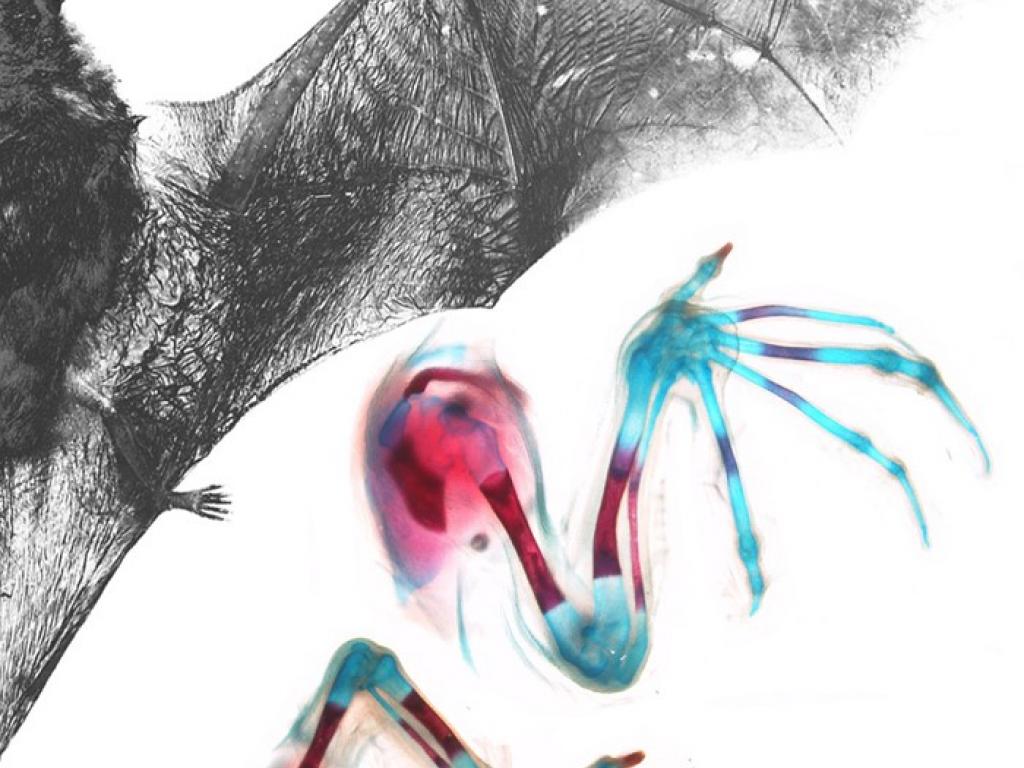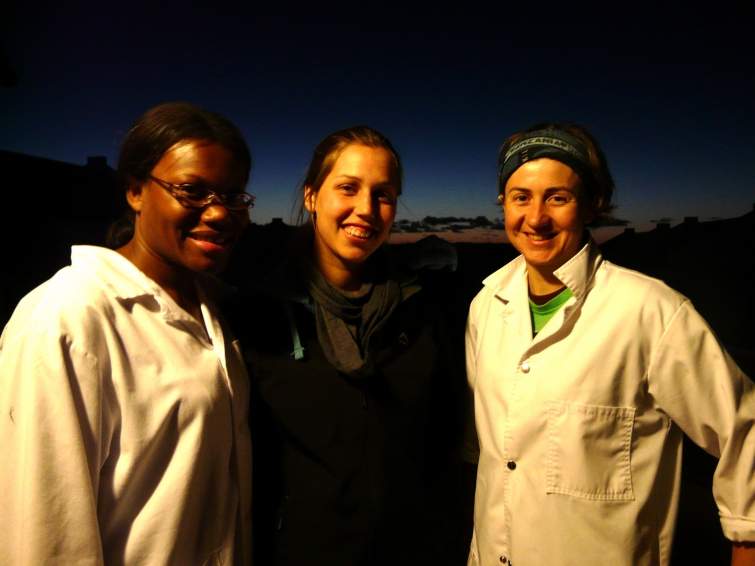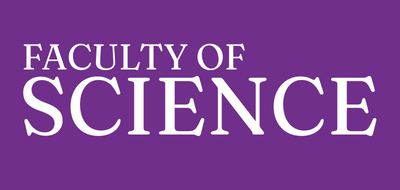Bat research takes off after a decade of research

An international team of scientists from the University of Cape Town (UCT) and University of California, San Francisco (UCSF) have published a landmark paper in Nature Genetics, which for the first time identifies both genes and gene regulatory elements that are essential in wing development in the Natal long-fingered bat (Miniopterus natalensis), a species widely distributed in east and southern Africa.
Bats are the only mammals capable of powered flight – an ability that evolved about 50 million years ago. The structure of the bat wing, as noted by Charles Darwin in 1859 in On the Origin of Species, is widely used among biologists as an example of both evolutionary novelty (the appearance of a new trait) and vertebrate homology (shared ancestry between two seemingly different structures) – in this case, the wing of the bat and the forelimb of other mammals.

An exhibit of a bat skeleton at the Iziko museum in 1999 sparked Professor Nicola Illing’s imagination of using the tools of modern genetics to decipher how the bat wing evolved. This led to an informal conversation with Associate Professor David Jacobs on what fun it would be to pursue this idea. Professor Illing is particularly proud of the contributions made by graduate students in her research group to this study. Successive contributions of Honours students willing to tackle ambitious research projects contributed to the study. The field-based preparation methods for doing this work were pioneered from scratch by Mandy Mason and Dorit Hockman during their Honours year in the Department of Zoology in 2005. Subsequently Zoe Gill (Honours in Molecular and Cell Biology, 2013, Masters 2014-2015) and Ash Parker (Honours in Molecular and Cell Biology, 2015) made important contributions in generating data and pioneering new protocols that were used in the study.
“It is gratifying seeing this work come to fruition after a decade of research. The collaboration with Prof Nadav Ahituv’s research group at UCSF, was sparked by our chance encounter over lunch at the 12th International Conference on Limb Development in Quebec in 2012, where we discussed our respective research interests in human hand congenital disorders, and my interest in the evolution of the bat wing.” said Illing. They agreed to collaborate, and as a first step, UCT PhD student, Stephen Schlebusch, joint first author on the Nature Genetics paper, spent six months at UCSF making use of their high performance computing resources to assemble the bat genome.
For the Nature Genetics paper, Stephen Schlebusch and Walter L Eckalbar, PhD, a postdoctoral fellow in Ahituv’s laboratory at UCSF, used the latest sequencing technologies to take a snapshot of which genes were active to complete a genomic analysis on the developing wings and feet of bat embryos, and mapped these to the genome that Stephen had assembled.
The researchers identified 1000’s of genes that are expressed differently in forelimbs compared to hindlimbs at three key stages of bat wing development. They found that many signaling pathways are activated differentially as well, including pathways important in limb formation, digit growth, long bone development and cell death. Also expressed differently are many proteins associated with ribosomes – molecular machines found in all cells that are responsible for protein production during limb development.
“On one level, a bat is using the same basic set of genes in its wings and hind limbs that a mouse [or person] uses. So on that level limbs are very similar,” explained Stephen Schlebusch, a PhD student in the Illing lab. “On the other hand, there aren’t many major differences between the forelimb and hind limb of most mammals. One might be larger or longer, but by and large they are fairly similar and their development follows a similar process. In comparison, a bat’s limbs could hardly be more different,” he said, "You have the vast elongation in the wing, the presence webbing and the asymmetrical pattern of the wing to name the most prominent of the differences. The thousands of differentially expressed genes we identified are testament to how substantially different the two really are.”

Christiane Muswambe-Nday, Liezl le Roux and Mandy Mason are still smiling at dawn at de Hoop nature reserve, after working through the night preparing samples for the M. natalensis genome and transcriptome project (Image: Nicola Illing)
Zoe Gill, a graduate student in the Illing lab characterized where a number of these differentially expressed key regulatory genes and novel long non-coding RNA transcripts were precisely expressed in bat embryos collected from the De Hoop Nature Reserve, validating the high throughput molecular genomic analysis, as part of her MSc.
“The events that initiate the dramatic elongation of digits in the bat wing happen much earlier than previously reported,” said Illing. “This is predicted from the differential activation of key signaling pathways which pattern the hands and feet of all mammals.” Ash Parker, together with Mandy Mason, a PhD student and Professor Illing, confirmed this prediction by showing that the size of cartilage condensations that subsequently form the scaffolds for formation of bones are much larger in the developing bat wing compared to bat feet. Ash notes “This was a great project to be involved in for my Honours research project. The work from being in the field with the bats to the lab bench was great fun.”
Professor Illing noted that aside from the insights it provided into bat wing development, the project was the first to identify genetic switches on a genomic scale using embryos from wild-caught animals, rather than laboratory animals.
This project also has ramifications for human medicine Ahituv explains “This work will increase our understanding of how alterations in limb development could lead to limb malformations in humans. Potentially, it could eventually help contribute to the development of tools and techniques to prevent such malformations.”
Other authors of the Nature Genetics paper are Sierra Nishizaki (PhD student), Nadja Makki, PhD, and Julia E VanderMeer, PhD, of UCSF; Christina Muswamba-Nday, PhD, of UCT; Kimberly Nevonen of the Oregon National Primate Research Center (ONPRC); Elizabeth Terhune of ONPRC and the University of Colorado, Boulder, CO; and Lucia Carbone, PhD, of ONPRC and Oregon Health and Science University. Jeff D. Wall, PhD, MS, UCSF associate professor of epidemiology and biostatistics and a faculty member at the UCSF Institute for Human Genetics, was a co-senior investigator.
This study was supported by funds from the National Institutes of Health and the National Research Foundation (South Africa
